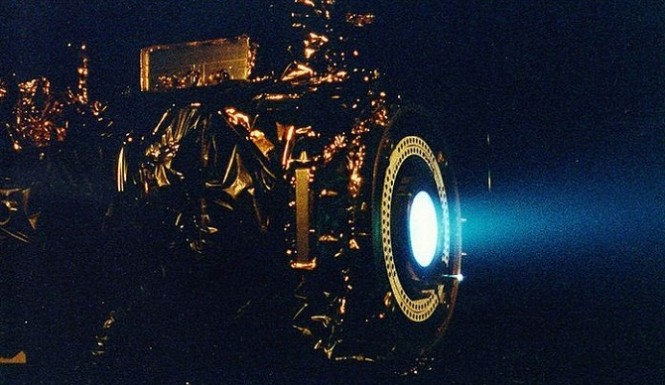‘Impossible’ rocket drive works and could get to Moon in four hours
The drive, which has been likened to Star Trek’s Impulse Drive in the Starship Enterprise, has left scientists scratching their heads because it defies one of the fundamental concepts of physics – the conservation of momentum – which states that if something is propelled forward, something must be pushed in the opposite direction.
British inventor Roger Shawyer has developed a fast electromagnetic (EM) propulsion drive which uses solar power to generate thrust, and is being claimed to be so much powerful, when fully developed, that it would complete the journey to moon in just 4 hours.
The original EmDrive was invented almost 15 years ago, but its use has been consistently ridiculed as scientifically impossible.
Predictably, many in the scientific community remain unconvinced.
Earlier this week, Martin Tajmar, a professor and chair for Space Systems at Dresden University of Technology in Germany claimed that his experiment, also within vacuum conditions, showed the engine produces thrust, according to Outerplaces.
Science Alert reports that Tajmar and a graduate student Georg Fielder, presented their test results in a paper titled, “Direct Thrust Measurements of an EM Drive and Evaluation of Possible Side-Effects”, at the 2015 American Institute for Aeronautics and Astronautics’ Propulsion and Energy Forum and Exposition, held in Florida on July 27. Theoretically, this means that until something wears out or fails, the engine could continue working without requiring any rocket fuel. With an engine that is capable of producing thrust thousands of times greater than a standard proton rocket, we would be able to reach Mars in 70 days and Alpha Centauri in “only” 100 years, as opposed to the tens of thousands of years it would take now, according to the Daily Mail.
NASA later revisited the design, suggesting it may be possible.
“Our test campaign can not confirm or refute the claims of the EM Drive but intends to independently assess possible side-effects in the measurements methods used so far”, Tajmar said, reports The Telegraph. Prof Tajmar revealed that their team observed “thrust close to the actual predictions” when several potential error sources were eliminated. “If true, this could certainly revolutionize space travel”.
Shawyer also claims that he is just a few months away from publishing new results confirming that his drive works in a peer reviewed journal. Nasa suggested that it could have something to do with the technology manipulating subatomic particles which constantly pop in and out of existence in empty space.









